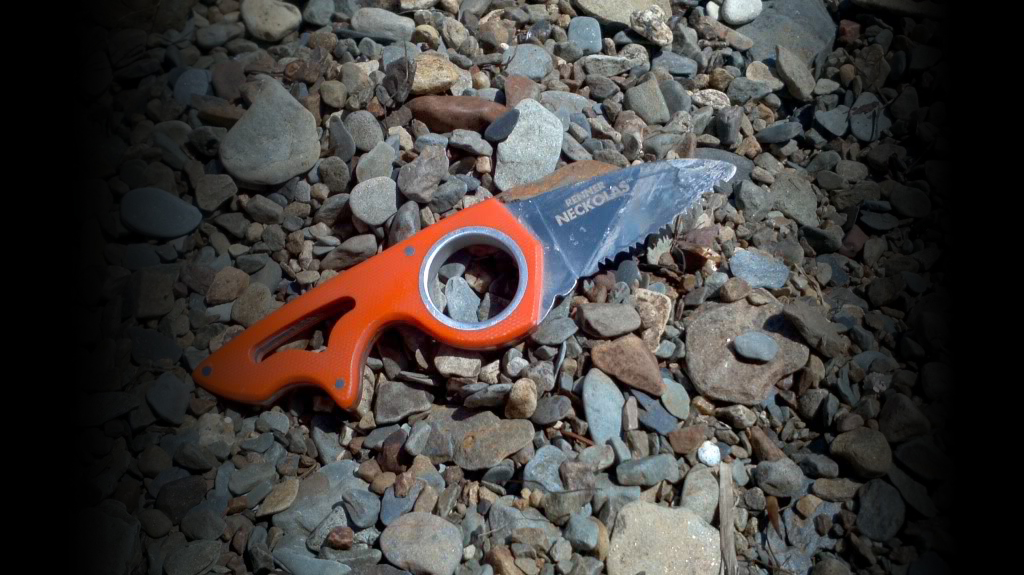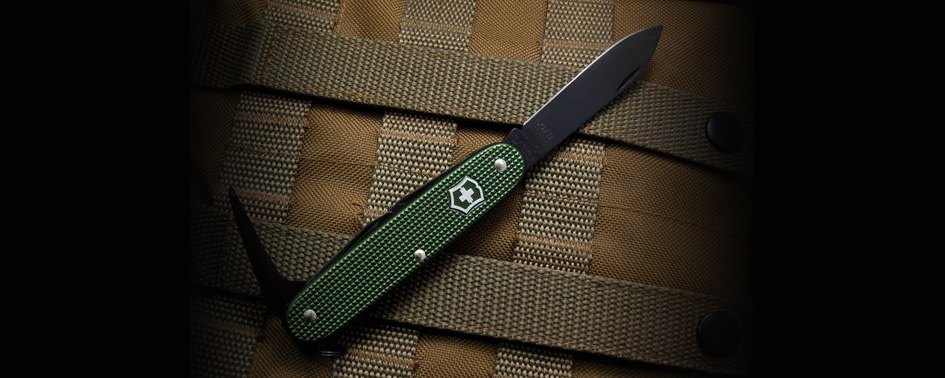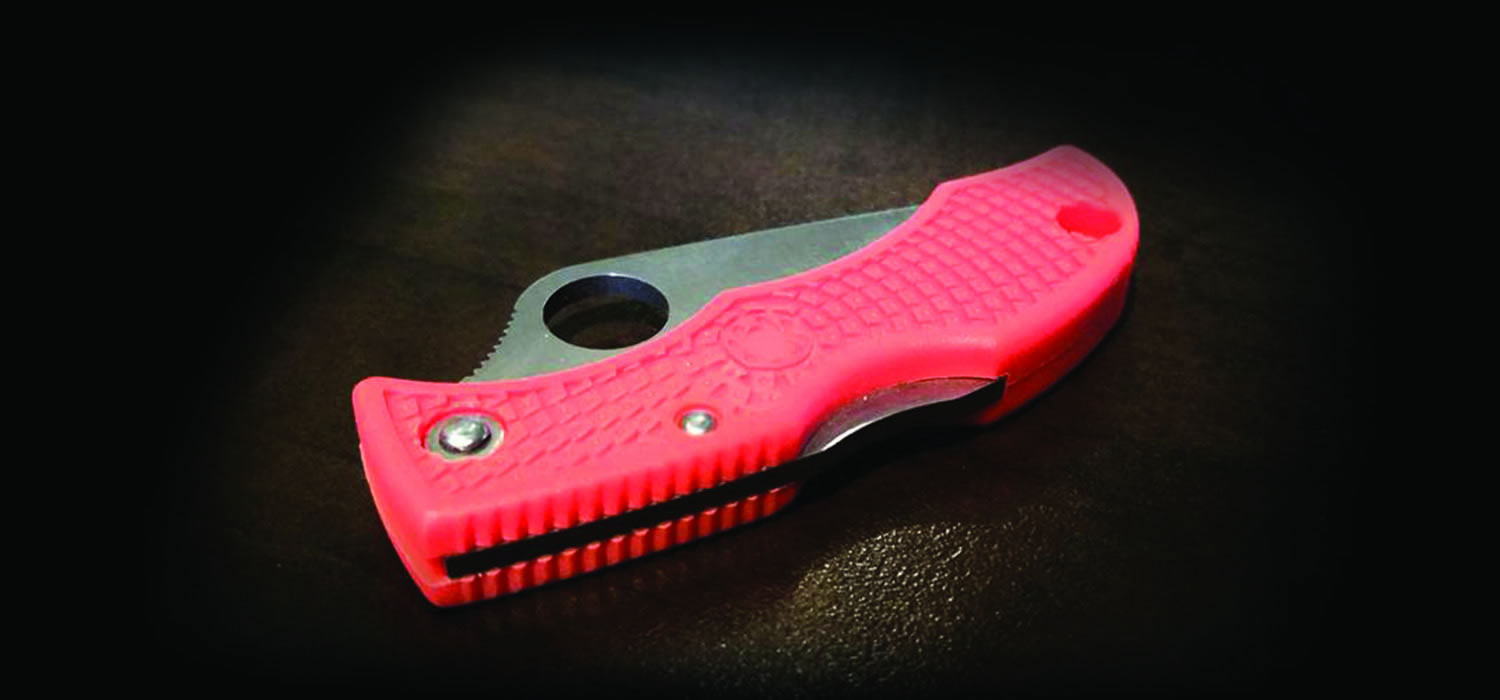The Utility Sharpener is quite different from the company's other offerings. Sharpworx products feature an adjustable arm that guides the knife across the stone. The Utility (for future mentioning) features a guide that rides on two rails. This guide has the ability to adjust angle between 10 and 40 degrees and allows you to sharpen everything from knives to chisels. Changing angles on the guide is as simple as loosening the knob on the underside of the Utility and tilting the gate to the desired angle. Locating your angle is found by the markings located on either side of the gate.

The gate glides effortlessly back and forth across the rails, this gives the feeling like it's just you and the stone. I found sharpening large kitchen knives easy to sharpen with the Utility, it was great not having to worry about holding an angle during the process. The stone that comes with the Utility is a diamond that has 400 grit on one side and 1000 on the other. The lower grit is great for edges that need repair, while the higher one helps refine the edge. Diamonds are a great choice for sharpening over more traditional stones, they remove material easier, and they are lower maintenance. Traditional stones like Arkansas or water stones need lubricant or soaking before the sharpening process. Diamond stones can be used with a lubricant, but it's not necessarily, they can however get clogged somewhat and should be cleaned routinely.

The Utility is a great system all on its own and makes for an easy way to keep things sharp. Mark has since expanded on the versatility of the system by adding a guide arm like his other models. Before I talk about the guided arm attachment, I wanted to mention that a great percentage of what Mark produces is 3D printed. This allows him to tailor make the parts he needs himself and makes prototyping convenient.

Attaching the guide arm to the Utility requires a bit of disassembly. You need to remove the screw on the underside of the Utility, this will allow you to slide out the diamond plate and remove the gate from the sharpening system.
Take the black base and slide it over the existing leg of the Utility sharpener, then insert the vertical shaft that's going to hold the guide arm. The guide arm has a pivot that allows the arm to not only move up and down on the shaft to adjust the height, but allows left to right, and back and forth. Included are two stop collars, I placed one below the arms pivot to make sure it stays level, and the other on the end of the arm, so I don't accidentally pull the arm too far and out while in use.


The end of the arm has the magnetic knife holder, this is like Sharpworx other systems, and it's opposite of traditional guided sharpeners. Most guided sharpeners have the knife held in a fixed position, while an arm holds the stone, and the stone is moved during the sharpening process. Mark flipped things around, the knife is held, and it's the one that's doing the moving while the stone remains stationary. The whole pivot is absolute genius, the knife is held in place by magnets, and angle is adjusted by turning the two knobs on top and sliding it to the desired angle (make sure you re-tighten those knobs). Underneath the pivot it has an adjustable plate that's moved by unscrewing two Allen bolts, this plate is a spine support. It helps make sure the knife is level and won't move during sharpening. When attaching the knife, make sure there's enough edge coming out past the magnets to make contact with the stone. Also, where the knife-edge curves (like with drop point or clip point styles), that belly needs to be at the center of the magnetic pivot. I originally had my belly more to the side, and it made sharpening feel awkward, and I wasn't getting my angle correct. Ensuring that belly is center to the sharpener is essential to getting your angle correct, and that sharpening motion feels natural.


Now with everything assembled you're ready to get sharpening. I hold one hand on the handle on the knife and the other on the systems magnetic pivot. You'll now move your knife edge across the stone line you would if you were freehand sharpening. The guide will help you maintain your angle as you sharpen one side of the blade. I go heel to tip when sharpening, some people feel that back and forth is ok too. After you've used the 400 grit and have sharpened for a bit, check the edge of the knife and see if you've developed as burr, which is metal that has rolled over to the opposite side. If this has developed, remove the knife from the magnet and flip it over, making sure that it's centered the same way as the other side. After you've sharpened on this side for roughly the same time as before, check and see if that burr has moved to the side again. If so, flip the knife once more and do a couple passes but go lightly against the stone. This will remove the burr or at least minimize it, removing a burr helps create a clean and keener edge.


Now flip your stone over and use the 1000 grit side, use the same technique as before. Because we're using a diamond stone there's no need to push hard, diamonds are very effective and do not need a lot of pressure to work. With my kit they included a piece of leather and some polishing compound. I put my compound on the rough side of my leather and stropped 5 times per side. Stropping is using light pressure with your edge trailing against the leather. Make sure your angle is roughly the same as your edge angle, I strop using a "J" motion, starting with the tip and ending with the base of the edge. Stropping helps remove any leftover burr and helps polish your edge a bit.

This process (minus the Sharpworx assistance) has been the same for way for centuries, it's an art that's unfortunately not taught to many people. The Utility with the guided arm brings this art to people who've never sharpened before, or maybe have tried but with difficulties. Since this system mimics the movements of freehand sharpening, there's no reasons someone cannot develop muscle memory and sharpen without the guide.

Mark from Sharpworx has flipped the script and created a series of devices that take the art of sharping a knife and made it easy for anyone to use. I love his approach to sharpening and the fact that he's constantly improving his designs. If you're looking for something to help you freehand sharpen, or perhaps want to have that freehand feel without worrying if you're doing it right, I feel the Sharpworx is something you might want to check out.






